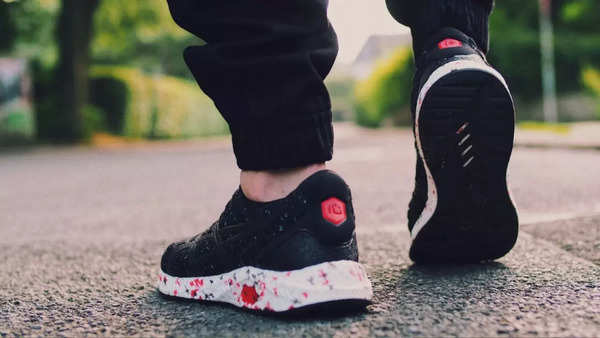You wouldn’t wear a baseball glove to play basketball, right? Well, the same logic applies to running shoes and walking shoes. While both may look alike, they are meant for entirely different uses. Here’s the lowdown on choosing the correct shoe and how it matters more than you think it does.
1. Cushioning: Control of Impact vs. Comfort

Running Shoes: If you’re running those block lengths or short sprints, it is wise to use footwear that is engineered to absorb shocks even as you hit the pavement at full throttle. Additional padding in the midsole aims at minimizing the impact of the forces on the joints and muscles. Every single landing while running is accompanied by a mini shock wave—running shoes dissipate that energy.
`1Walking Shoes: These ones have a cushioning system that is adequate for the movement as it is designed for the long-distance journey with low set support. As compared to running, walking has a lower impact hence walking shoes do not require that amount of shock absorbance. It’s all about a nice and smooth balanced motion over the course of steady paced footsteps.
2. Flexibility: Free Flow vs. Propulsion
Running Shoes: Crafted with a more inflexible base that aids in thrusting the runner further ahead during each leg’s movement. They feel a little more rigid so as to enhance the forward activity associated with running especially at the toes.
Walking Shoes: This is largely dependent on the provision of a flexible base. When walking, the foot moves in a rolling fashion from the heel to the toe. Walking shoes are made to maintain that rolling motion thereby bending. The added bend helps one keep an easy and comfortable stride even while walking for extended periods.
3.Heel-to-Toe Drop: Speed vs. Balance
Running Shoes: These normally come with a high heel elevation of around 10 mm and above especially to those athletes whose heel to toe differential drop is higher than 12 mm. This has the effect of causing a forward distortion of the body making it easier for the athlete to run with less expended energy. It also helps to retain an efficient running form as the design encourages a midfoot or forefoot landing of the body.
Walking Shoes: Unlike other sports shoes, the walking shoes have a drop structure which is lower in order to help keep the foot more level which also facilitates the heel-to-toe motion. It also helps improve balance allowing one to walk comfortably and without tension on the lower legs.
4. Weight: Light Speed vs. Everyday Ease

Shoes For Running: Quicker, lighter! It is aimed at minimizing any resistance to movement and the impact of fatigue on the athlete. A lighter shoe helps in quickening the speed of the user, whether during a short distance race or when running long distance.
Shoes For Walking: These shoes are more focused on longevity and comfort than on speed. They are a bit weightier, providing more structure and support for a longer duration of use, but still low enough in weight to keep you active without tiring.
5. Support: Stability vs. Freedom
Running Shoes: Adding support is a common feature present in many running shoes especially to over-pronating runners who often have feet that roll inwards or those who require more arch support. Stability features are built into the shoe to ensure that the motion of your foot is controlled during a stride.
Walking Shoes: In most cases, walking shoes still give support, but there is less correction than in running shoes. These are designed to allow natural foot movement while concentrating on making a secure and comfortable fit, rather than a hard one.
Why It Matters?

If one does not choose the right shoe, one’s feet will undoubtedly suffer from discomfort or even worse injuries. Athletic footwear such as running shoes serves the purpose of sustaining the speed, pounding, and impact with which one runs, enabling one to run for longer periods with minimized risk of injury. If you try to walk in these shoes, it will with minimized risk of injury. If you try to walk in these shoes, it will be uneasy and hard feeling since they are meant to work too much beyond that which you require.
Walking shoes, in contrast, are designed for more extended and more controlled movement. Wear them for running and you will most likely realize that they do not have enough structure and cushioning to prevent issues such as blisters, soreness, or even worse – joints due to the body’s shock absorption capabilities not being adequate.
The footwear you choose can greatly influence your level of activity. As the name implies, running shoes are specifically designed to enhance your performance, ease your stress, and protect you from injury with every sprint. Walking shoes feature soft cushioning without excess support, ensuring all-day comfort even on long walks.
Thus, whether you are covering some distance or just taking a walk at the park, do not forget that there is a reason why every shoe has its place and time. Do this and your feet will be grateful to you!
Image courtesy – Canva
Beat chilly winters with Kashmir’s famous fur shoes





